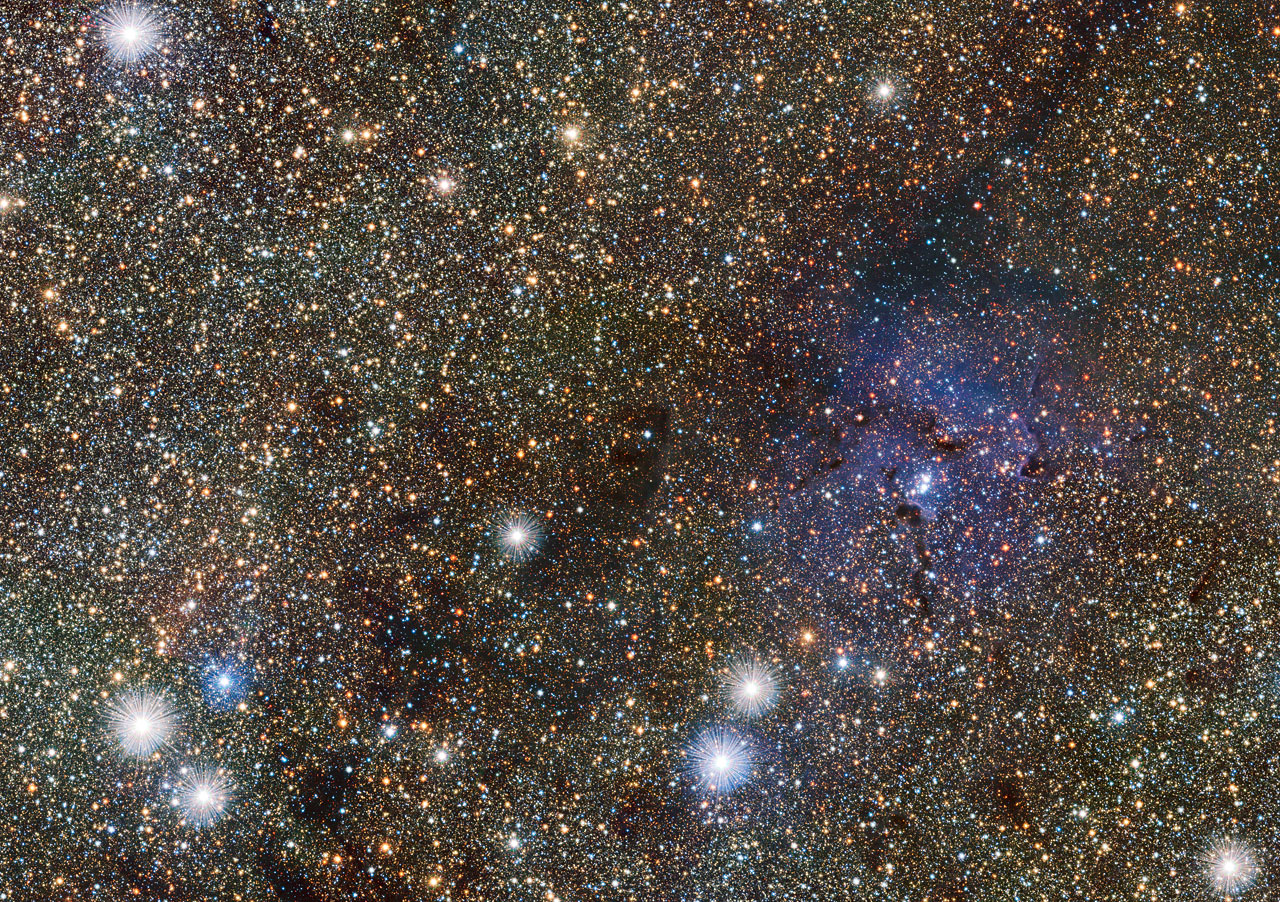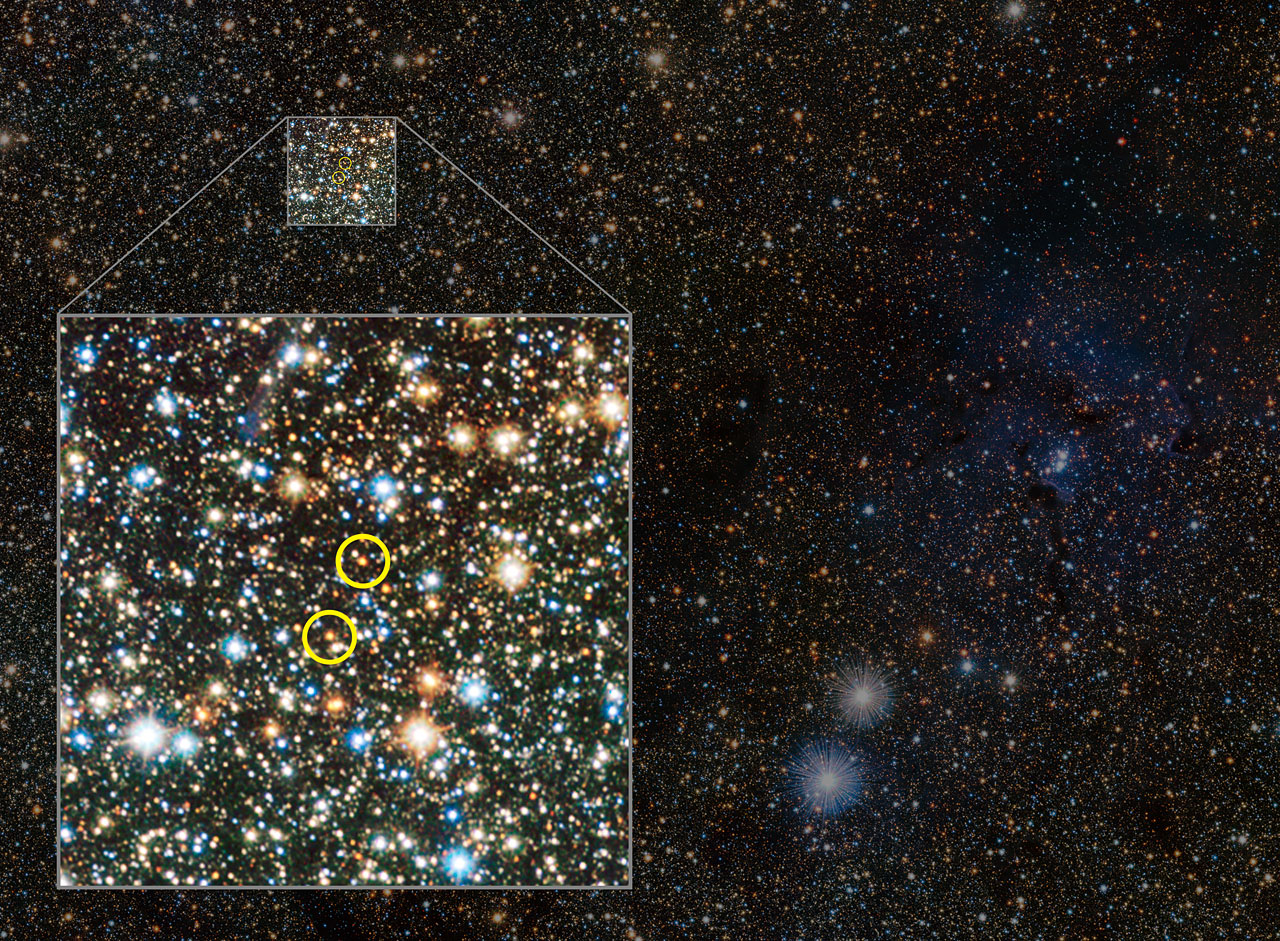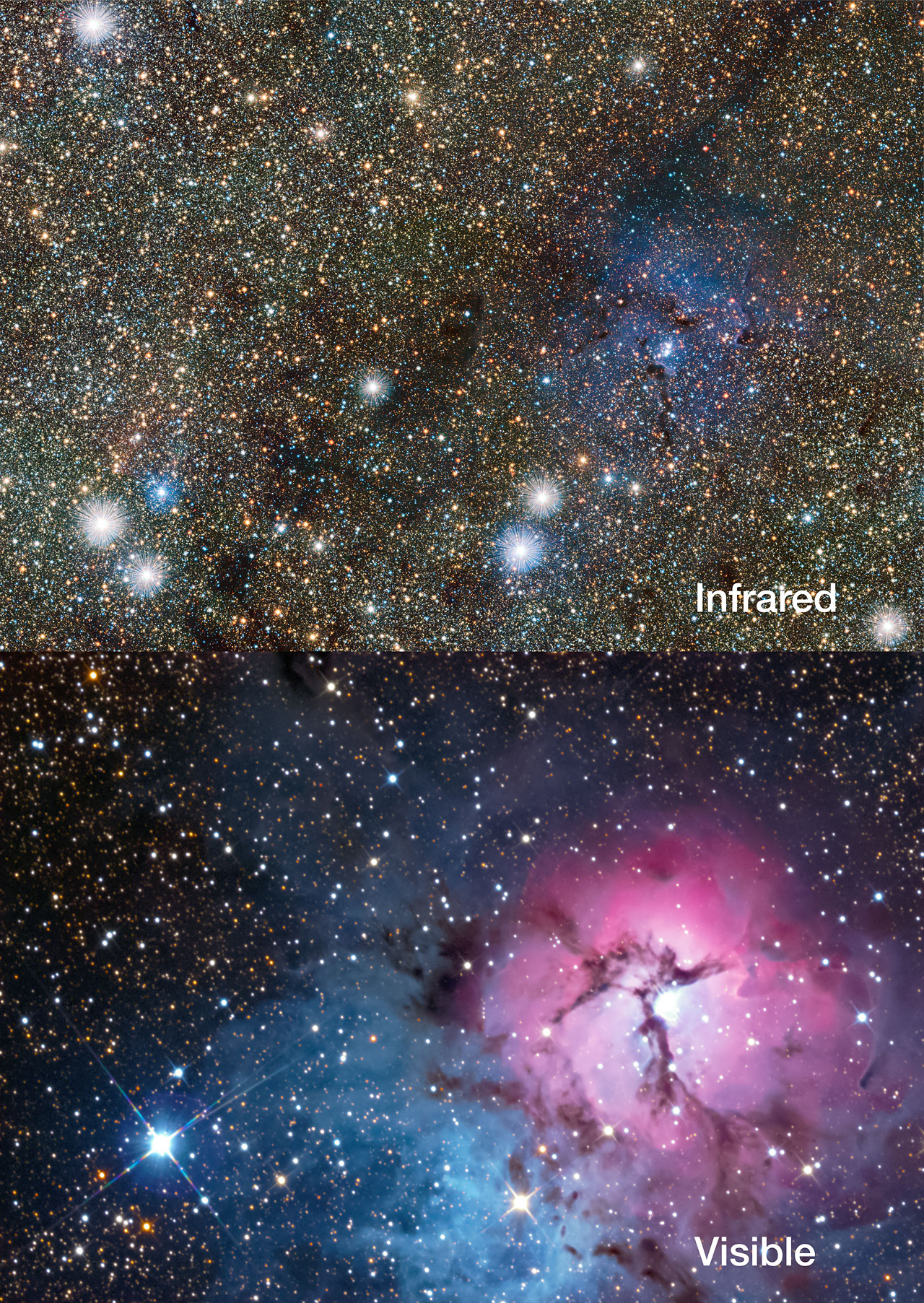Amazing New Nebula Photo Uncovers 2 New Stars (Video)

An amazing new photo of a famous nebula reveals two previously undiscovered and very distant stars.
The amazing image of the Trifid Nebula was taken by the European Southern Observatory's (ESO) VISTA telescope in Chile. While the picture does capture an amazing view of the nebula in infrared light, it also has some serious scientific merit. Researchers examining the image found two unknown Cepheid variable stars, objects much brighter than the sun that brighten and fade through time, ESO said. You can also fly through the Trifid Nebula in a new video produced by ESO.
"This pair of stars, which the astronomers think are the brightest members of a cluster of stars, are the only Cepheid variables detected so far that are close to the central plane, but on the far side of the galaxy," ESO representatives said in a statement. "They brighten and fade over a period of 11 days." [50 Fabulous Deep Space Nebula Photos]
While the two newly discovered stars (located on the middle-left part of the image) appear to be embedded within the nebula in the photo, they are actually much more distant. The Trifid Nebula is located about 5,200 light-years from Earth, but the stars shine about 37,000 light-years from Earth, according to ESO.

The new picture of the Trifid Nebula looks markedly different from many earlier images of the star-forming region. Images taken of the nebula in visible light reveal amazing dark and dusty paths among the bright splashes of stars; however, the new image (taken in infrared) cuts through that dust, ESO representatives said.

"In the new image, as if to compensate for the fading of the nebula, a spectacular new panorama comes into view," ESO representatives wrote in the same statement. "The thick dust clouds in the disc of our galaxy that absorb visible light allow through most of the infrared light that VISTA can see. Rather than the view being blocked, VISTA can see far beyond the Trifid and detect objects on the other side of the galaxy that have never been seen before."
Scientists sometimes use Cepheid variable stars to measure distances in the cosmos by measuring the variable brightness of the object. On average, these stars are about 500 to 300,000 more luminous than the sun, scientists have said.
Get the Space.com Newsletter
Breaking space news, the latest updates on rocket launches, skywatching events and more!
VISTA took the new image as part of a survey designed to hunt for undiscovered celestial objects in the central parts of the Milky Way, according to ESO. This photo represents only a small fraction of the survey.
Follow Miriam Kramer @mirikramer. Follow us @Spacedotcom, Facebook and Google+. Original article on Space.com.
Join our Space Forums to keep talking space on the latest missions, night sky and more! And if you have a news tip, correction or comment, let us know at: community@space.com.

Miriam Kramer joined Space.com as a Staff Writer in December 2012. Since then, she has floated in weightlessness on a zero-gravity flight, felt the pull of 4-Gs in a trainer aircraft and watched rockets soar into space from Florida and Virginia. She also served as Space.com's lead space entertainment reporter, and enjoys all aspects of space news, astronomy and commercial spaceflight. Miriam has also presented space stories during live interviews with Fox News and other TV and radio outlets. She originally hails from Knoxville, Tennessee where she and her family would take trips to dark spots on the outskirts of town to watch meteor showers every year. She loves to travel and one day hopes to see the northern lights in person. Miriam is currently a space reporter with Axios, writing the Axios Space newsletter. You can follow Miriam on Twitter.









